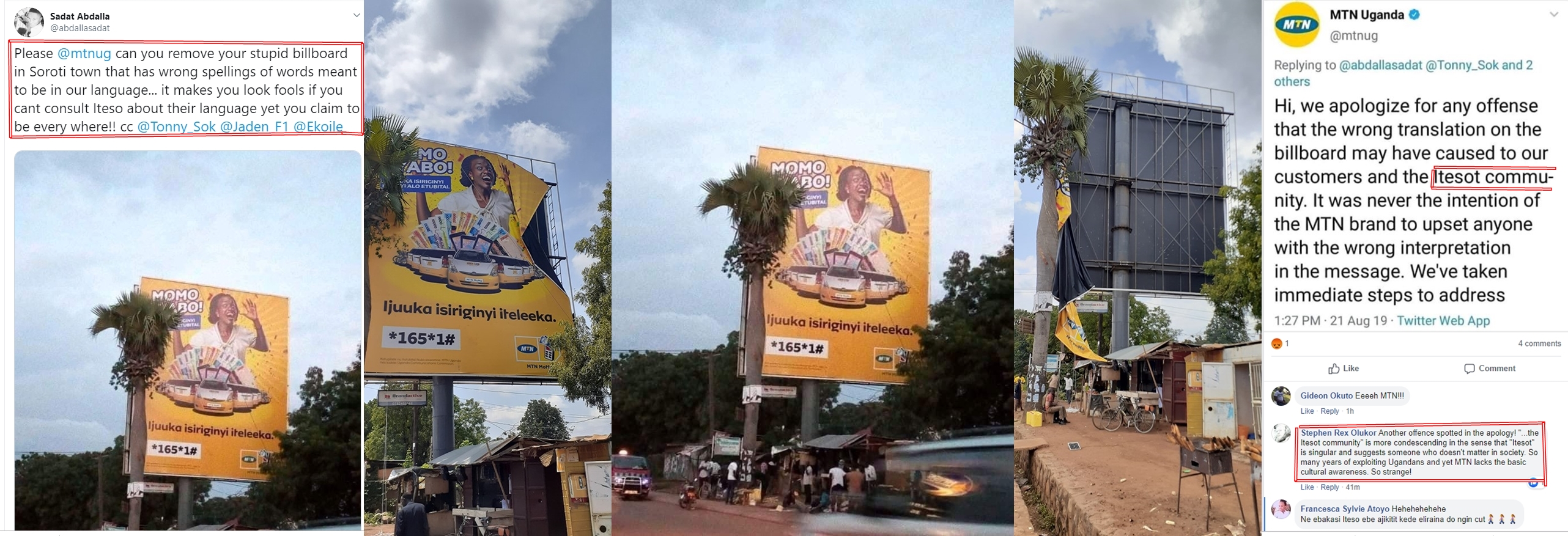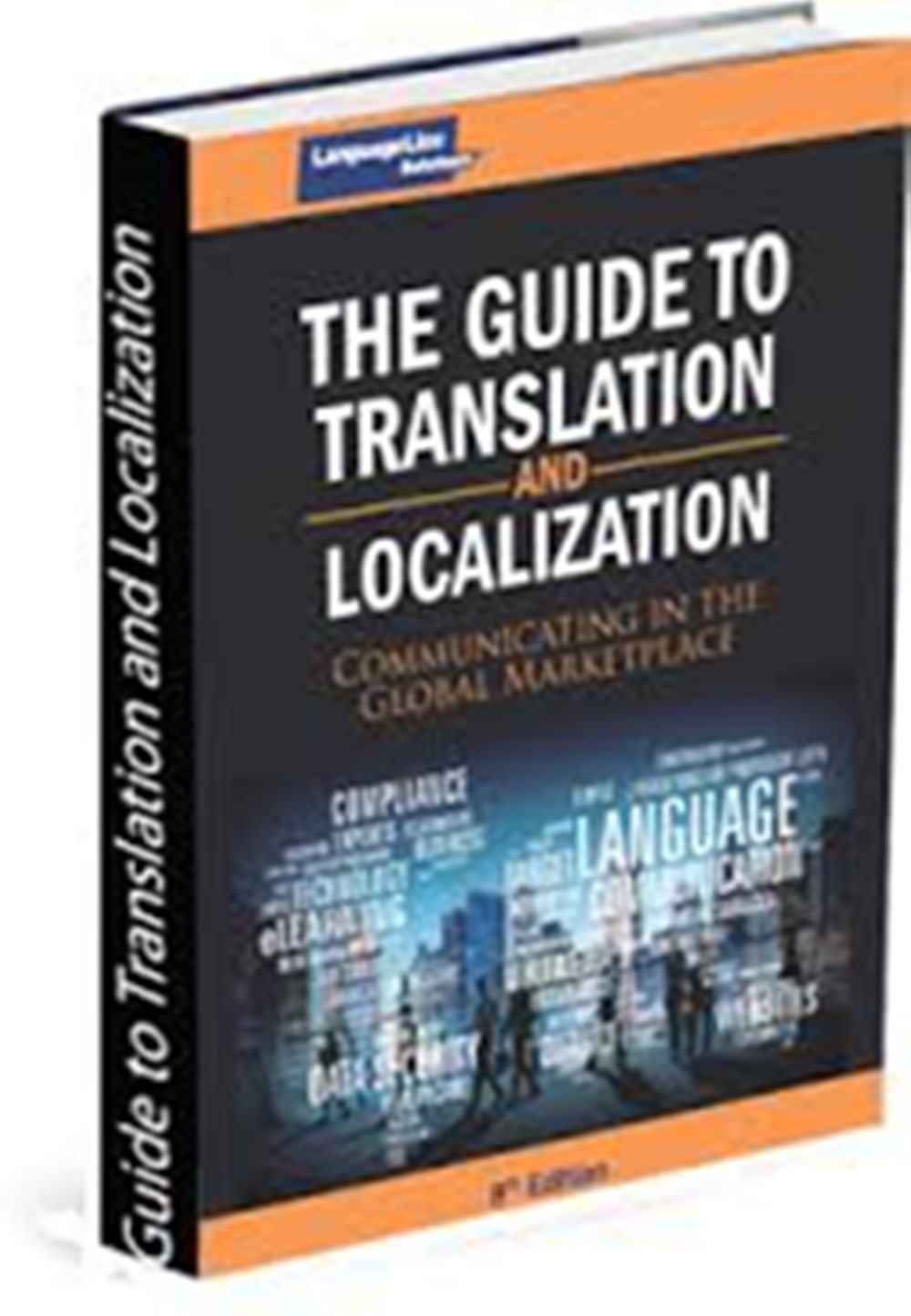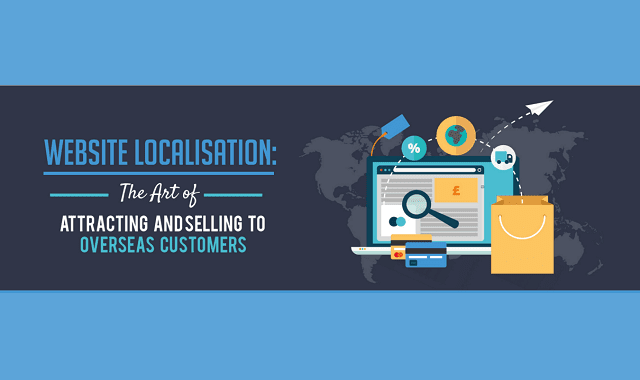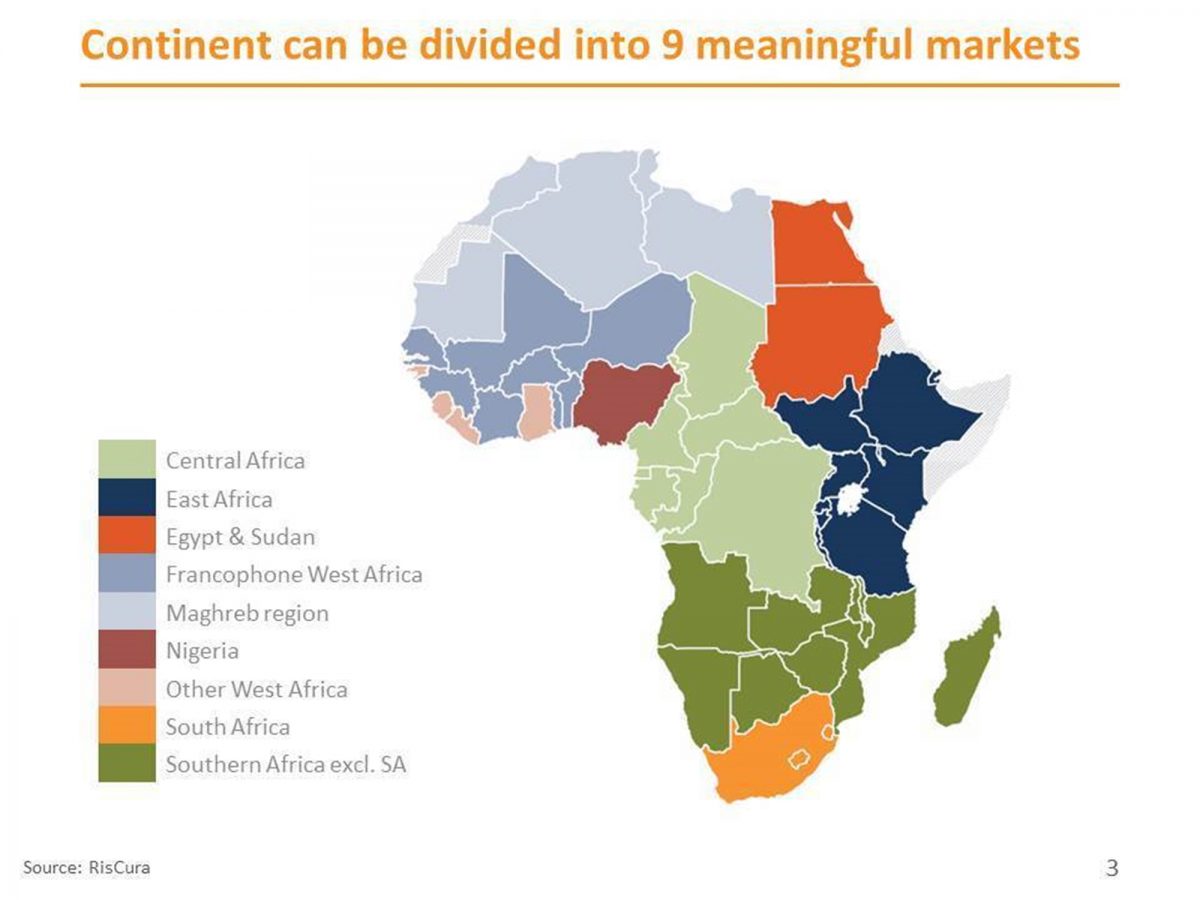Majority of companies exploit the chance to take their business across borders with excitement! Unaware of the fact that they’re about to join the infamous rank of international marketing fails. They think they’re taking along plenty of hard-earned know-how from home. But sometimes this all pales in comparison to a few little mix-ups when it comes to language. Borders might be disappearing, but cultural and language barriers still stand strong. Hence the need to learn how professional we can deal with our Marketing translation and localization process.
Translation traps
Translation traps are everywhere, be it a badly translated slogan, a company name or a cultural blunder. For instance, the most recent translation blunder was with MTN-Uganda where they displayed a promotion banner (MoMo Nyabo promotion) in Soroti town with miss-spelled content. When locals had a glance at it they couldn’t hold it back, so they had to inform MTN instantly. In no time the Company had to pull down their banner. And to make matters worse even the apology had errors still! Oh my! This was really bad to both the Company brand and to the locals themselves. Checkout the image below;

Conquering a new market
Conquering new markets is all about the right marketing, and marketing means translating ideas, not words. So, let’s find out what translation and localization mean;
Translation
Translation means conveying your content from the source language into the target language, respecting grammar rules and syntax. It’s not a word to word translation, but a complex process that takes into account each language’s standards and guidelines. Translators are required to produce accurate work to make sure the message in the target language keeps the original meaning of the source text.
Localization
Localization means more than rewriting the text into a different language. It adapts your message to local audiences. Localization is widely used for websites, mobile apps, software, video games, multimedia content and voice-overs. Localization means you’ll need to provide content for that particular setting such as Ateso, Acoli, Ganda, among others even though these groups have English as their official language. Just as English varies from the US, to Australia, UK and Canada, most languages have local versions and dialects that you need to consider when building your marketing strategy.
In this context, translation is just a small step in the localization process. It’s essential to have a good team of translators to localize efficiently, but you’ll also have to work with local marketers and consultants, to make sure you respect cultural aspects and local laws for each market you’re localizing in. Regular translation probably isn’t enough for your business to be successful in local markets. You need to localize your content to gain the trust of local public. Because selling in a foreign country or locale means more than overcoming language barriers. It means coming up with a customized message, specially made for each local audience. You need to go beyond translation, as cultural barriers can make understanding the original message difficult. KitKat, for example, didn’t just translate their famous slogan into Japanese when they launched their product in Japan. The Company changed ‘Have a beak, have a KitKat’ with ‘Kitto Katsu’, which means ‘surely win’. They also launched a series of exotic chocolate bars to meet the local taste. This strategy made the KitKat Japanese campaign a localization success, clearly demonstrating how to use the same words that clients do to express themselves.
Simple steps to follow for a successful marketing translation and localization strategy
Define your audience:- Determine your language combination. When appropriate, be sure to target a particular region or country to ensure appropriate use of language based on the target region and culture. For example, choose English(UK) to Spanish (SP), rather than simply English to Spanish. Are your readers young or old? Industry experts or the general public? Local or International? With a clear target audience in mind, the translation team will be equipped with that knowledge when localizing the content for that target audience. Consider the subject matter and target audience. Legal, medical and technical translations usually require a serious, formal tone and in some cases, use of the passive voice. In contrast, marketing content allows more freedom in language and tone, including the use of an active voice to feel natural.
Set publishing requirements:- How will your translated project be distributed? For example, a website translation project will require clear communication with the ‘language service provider’ on project scope; that is to say; Meta data, SEO, graphics localization and content distribution. Some companies may have duplicated versions of their website that are hosted in their new target countries. Others may opt for a language navigation menu within one content management system. Dynamic language can work directly within your content management system and upload translated content or be provided source code that is translated and returned in the same format. It is important to set these publishing requirements before beginning the project to avoid overruns on project deadlines, budge and scope.
Quality translation:- Consider using both native and professional translators for your project. This can help you capture both translation and localization at the same time.
Proofread:- Check for linguistic and cultural errors, as well as punctuation, and capitalization. Then, check for layout consistency of bold or italicized words, date/time and number formatting.
Create a terminology glossary and style guide:- A terminology glossary and style guide will boost translation speed and ensure preferred terminology, and consistent tone/voice throughout this and all future translation projects.
Communicate any hard deadlines:- The turn-around for your translation project will depend on factors such as translator and editor availability, language combination, and word count. Other possible factors to consider are difficult terminology and the requirements of a niche industry or highly-targeted audience. However, if you have a particular deadline, that information should be relayed to ensure adequate resources are available. Review content for any idioms, expressions and cultural references that may require localization or even trans-creation. Taking the time to prepare a quality translation project will improve the quality of translation and speed of delivery.
Advantages of proper Marketing translation and localization
Marketers are often plagued with a dilemma when reaching out to a new market: to standardize or localize? To standardize is obviously the easiest from an operation standpoint, meaning that you use the same marketing style and theme for all your products and services regardless of where you’re marketing them. However, there are disadvantages and advantages on both sides, but when reaching out to a new market, it’s actually more advantageous for marketers to choose localization.
With marketing localization, you are able to create linguistic and physical adjustments to your existing products or services so that it fits in with your new target market’s specific needs. It takes a lot of work to customize and make adaptations of existing products and services, especially if there are multiple products to launch, but it allows companies to resonate with their customers, and resolve the deepest needs and desires of their new market from the market’s own perspective. Checkout some of the advantages of Marketing translation and localization below:
Reduces the barrier to entry:- When introducing your company or idea to a new market, there are several barriers to entry that may be observed. It could be government monopoly; limited or scarce channels of delivery of goods; tight competition; or lack of product or brand awareness. Market adaptation is mandatory in many countries and so it makes perfect sense to localize marketing. This could be the translation of product packaging, removing/altering product ingredients or packaging, changing brand names and so on.
One classic example for this would be Coca Cola in China. Coca Cola is currently known as Kekoukele in China. This is because its original brand name, when translated into Chinese, means “bite the wax tadpole” or “female horse fastened with wax,” which are unusual and inappropriate. It would have been incredibly unappetizing to buy a drink thus named, so Coca Cola had to do a change to their brand name to adapt to the Chinese market. They chose the brand name Kekouleke because it means “tasty fun” and it is close to the original brand name. This dramatically changed Coca Cola’s image in China, and it helped them connect to locals in a more language-appropriate and personalized way.
Customizes customer experience:- In many first-world countries, products are often sold in larger-container quantities, which is done based on both consumption and convenience. On the other hand, the same products sold in third-world countries may not be affordable for the majority of consumers and that would greatly affect the sales. Due to these pricing constraints, companies may create products in different and smaller packaging, such as sachets or pouches, for the greater market to be able to afford it.
Breeds cultural respect and appropriation:- It’s no secret that cultural patterns, religions and norms affect people’s habits, outlook in life, the media they choose and even the products they buy. Advertising or identifying your brand with a Christmas or Christmas-related promotions, for example, in a largely non-catholic country may not be accepted by the target market. On the other hand, advertising your brand with a Christmas theme in Christian and catholic countries will be largely appreciated and remembered. Outsourcing experts from Translate4africa.com have seen how hiring local marketing executives in Africa, where every border is a new country and culture, played a big role in providing contextually correct translations and preventing conflicts with the target market’s culture.
It results to better brand identification:- Marketing translation and localization “personifies” a brand, which helps it connect to its target market on a deeper level. Some brands become an extension or expression of culture in some countries by integrating culture into their brand message and active storytelling.
Hastens local business development:- Marketing translation and localization accelerates business development. Creating a demand for your products or services is not your ticket to success. Knowing your target market deeply and seeing their needs from their perspective is the key to providing products or services that are in demand. You won’t be able to achieve this if you use the same standards for all your target markets all over the globe. This can only be done with marketing localization based on in-depth market research.
In conclusion
Marketing translation and localization is a complex, yet often an underestimated field. While it consists of translating from one language to another, it also involves writing appealing and persuasive content that has impact to the local audience. Unlike general translation, marketing translators need to be good writers first and foremost. Marketing translation can also involve trans-creation, where a translator and writer work together to create truly and powerful content. Choice wisely! Always be conscious of your marketing content, as it’s your key to either success or marketing failure.




